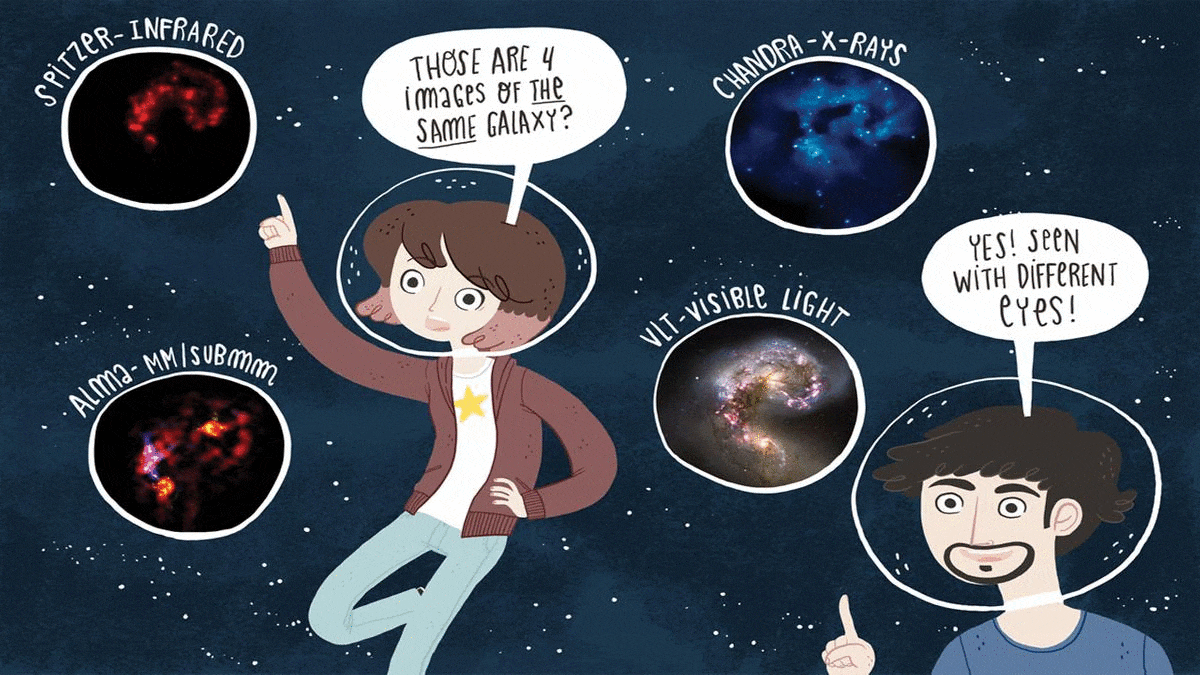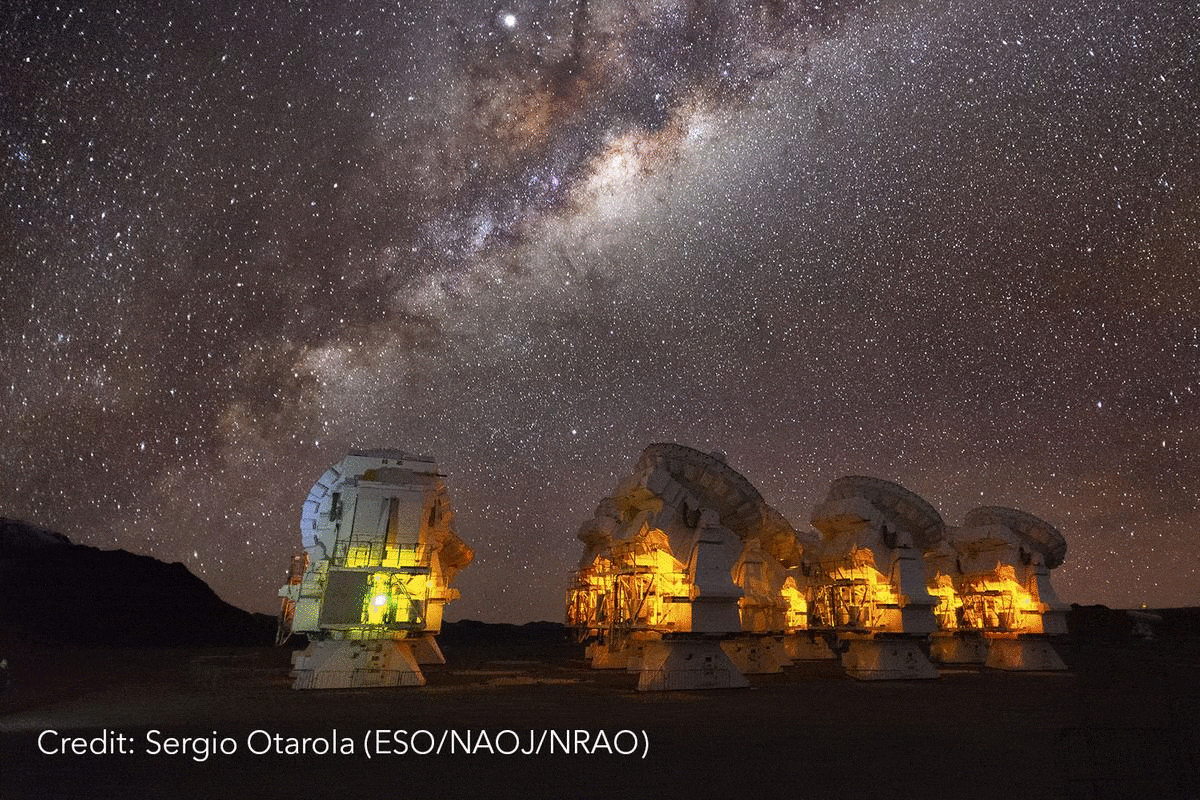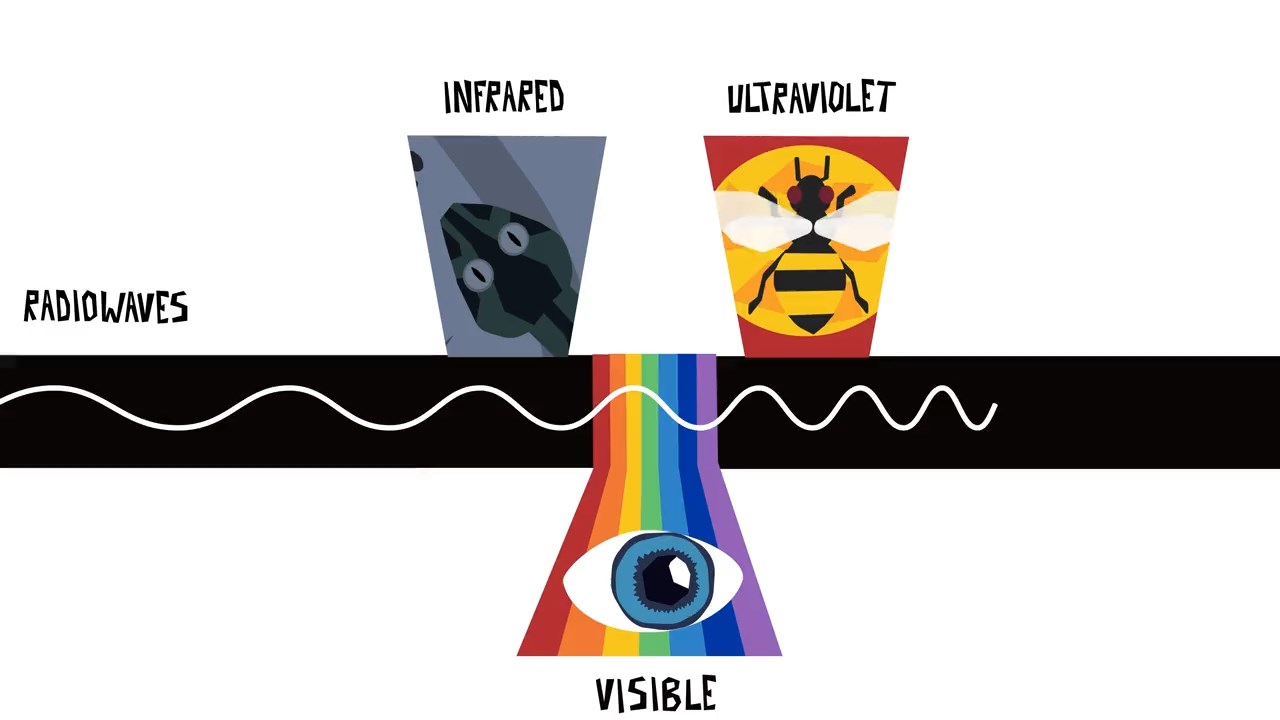AtLAST
AtLAST is a concept for a new telescope that will map dust and gas across the sky in incredible detail. We can measure these using submillimetre (microwave) light.

What is the Electromagnetic Spectrum?
Why do astronomers want to look at galaxies using different wavelengths of light?
Courtesy of ALMA and ESO
Submillimetre (microwave) light is light with a wavelength shorter than a millimetre and is in the far-infrared part of the spectrum. It traces very cold processes in the Universe.
The telescope will observe a very large area of sky at a time – an area equal to 16 full moons, much larger than any existing submillimetre telescope. This will allow us to make maps of the sky much faster, and in much more detail, than we can imagine with today's observatories.
The telescope design presents many technological and engineering challenges. The Earth's atmosphere blocks submillimetre radiation. This means the telescope must be located at very high altitude, and proposed site is on the Chajnantor Plateau, 5000m high in the Atacama desert. It will need a dish that is incredibly smooth: the huge 50m dish will need to have no bumps or imperfections on scales greater than a human hair!

Antennas and the Milky Way
AtLAST will also be the first completely renewably powered telescope. Engineers at the University of Oslo are working on innovative technology that will support the telescope as well as local communities.
To find out more about the Atacama Large Aperture Submillimeter Telescope project head over to the AtLAST website
Images and videos used on this page are courtesy of ALMA and ESO
Family Friendly Activities
LIVE from Chajnantor
Last available image from the ALMA’s Array Operations Site (AOS) at the Chajnantor Plateau in the Atacama Desert of northern Chile.
This high-definition camera provides a 24/7 interactive view, in exquisite detail, of the telescope’s mountain home at 16,500 feet above sea level. It can be used to explore the site in all directions, providing views of the array antennas and of the geologic wonders of the Chajnantor Plateau.

